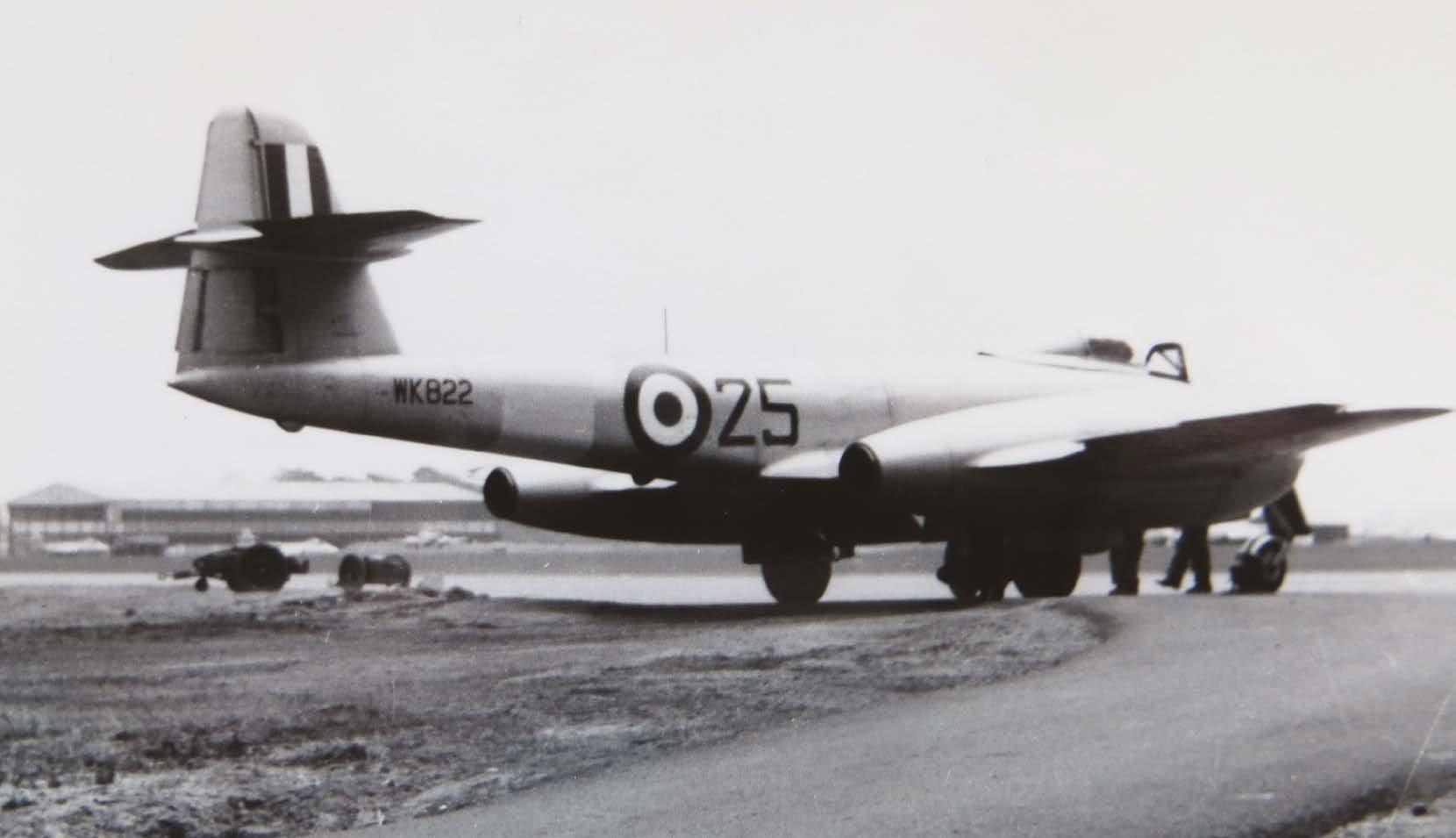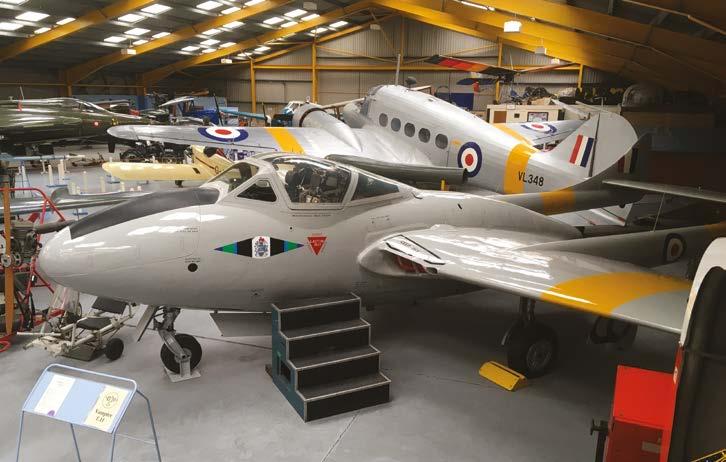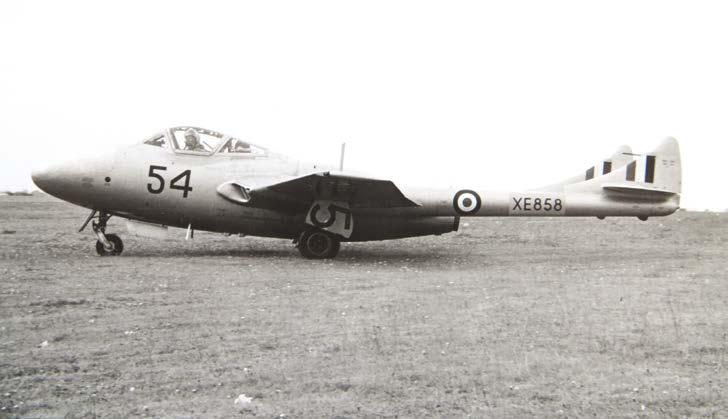
4 minute read
From One Wing To Another
Kestrels and Buzzards now command the skies at the disused Worksop Airfield - a stark contrast to the Lancasters, Meteors and Vampires of its heyday. Made takes a look back at the former pilot training site on the Osberton Estate…
Believed to be RAF Worksop Lancaster and crew, Newark Air Museum Archive.
RAF Worksop Meteor F.8. NAM Archive. All imagery with with assistance from the Newark Air Museum Archive, with thanks to Howard Heeley.

RAF Worksop Meteor F.8, NAM Archive.


RAF Worksop Meteor F.8, NAM Archive. T he story of RAF Worksop began in July 1942 when the Air Ministry requisitioned land from the Osberton Estate. It was designed as a 'Class A' bomber base with three intersecting runways and built by the construction company George Wimpey. It was intended as a satellite site for
RAF Finnerley, nowadays known as Doncaster - Robin Hood, and featured a two storey watch office control tower, two type T2 aircraft hangars and 36 parkings for heavy bombers. Accommodation was also built north-east of the airfield for RAF and WAAF personnel.

By 7 November 1943 Worksop Airfield was ready for action, heralding the arrival of the 18 (Polish) Operational Training Unit just four days later. The unit brought with them Wellington bombers. They were later joined by RAF crew until 1944 when most of the pilots were relocated to RAF Abingdon and only a few trainees remained to complete their courses in January 1945.
The airfield then largely served as a base for smaller units to operate development and training of personnel on the various engines based at RAF Worksop at the time, which impressively included Lancasters, Beaufighters and Wellingtons.
By the end of 1948, the airfield has been reassigned to Flying Training Command who mothballed it on a Care and Maintenance status. It was during this year interestingly the airfield also became home to army tanks, with A Squadron of the 6th Royal Tank Regiment assigned based at the site.
Interest in RAF Worksop reignited in the 50s during the Korean War with the airfield required for fast jet training for the 211 Advanced Flying School, also known as the Meteor Advanced Training School. This move saw the airfield lucky enough to receive the brand new Meteor F.8s in 1955.
The school disbanded in April 1956, replaced by the 4 Flying Traning School who brought with them De Havilland Vampire FB.5s, used for training pilots in solo flying. A few Meteors remained in service for refresher training. By 1958, however, the 4 Flying Training School had disbanded.
RAF Worksop Vampire T.11m NAM Archive


RAF Worksop Meteors on the flightline, NAM Archive
Provost T.1 WV606 at Newark Air Museum - Howard Heeley.

Believed to be RAF Worksop Lancaster and crews, NAM Archive. A contributory factor of the demise of Worksop Airfield was the industrial haze caused by the steel works around Sheffield and the region’s coal mines, with Worksop listed as one of two bases in ‘industrial haze areas’. The haze, known as ‘clag’ by pilots could reduce horizontal visibility to barely 1,800 metres, which combined with the poor instruments on the Meteors, meant pilots had to cope with false horizons and no physical back-up.
The airfield returned to the ownership of the Osberton Estate following its formal closure on 8 December 1960, during which time the RAF buildings were demolished but one of its runways remained intact.
During the 1970s, Dukeries Rally included the airfield as one of its stages with three laps around the site. In the years to follow, an abundance of boy racers used it as a race track, and an influx of travellers took up residence in the early 2000s.
Today, Workshop Airfield rests harmoniously within the picturesque Osberton Estate. The land is presently used for game hunting and horse riding, and its pre-RAF use as sheep and cattle rearing. Wildlife is numerous, with birds of prey now its aerial feature; Kestrels and Buzzards are often spotted. There are several good footpaths also with a wonderful show of snowdrops in the spring.
There remain remnants of the airfield, however, and the RAF is still associated with Worksop via the 303 (Worksop) Squadron ATC Air Cadets. Newark Air Museum took over 500 tonnes of rubble from the last runway for levelling material. Some concrete aircraft tie downs, part of a taxiway to the north-east of the airfield and a small section of runway 28/10can still be seen.











